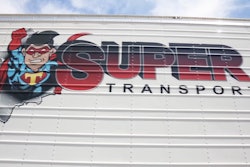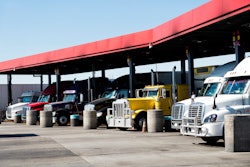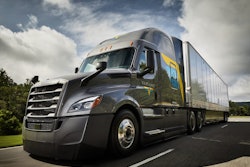The cost of fuel is the biggest expense for motor carriers per mile.
Drivers OTR can run upwards of 130,000 miles in a year, and across all those miles a 1 MPG difference can save trucking companies more than $10,000 annually. This is why some companies offer fuel efficiency bonuses every month for drivers; because good fuel habits will help everyone in the long run.
Here are some quick – and in most cases easy-to-implement – tips to save fuel that can add up to big dollars.
Pre-trip inspections & regular maintenance checks
Yes, it’s an inconvenience, but it’s worth it. And you have to do them anyway.
Start with the tires. If tire air pressure is reduced even 1 PSI, you can lose .3% of your fuel economy. Keeping the tires in proper alignment will also save a lot of money over time.
Monitor the fan (it should only run about 6% of the time). Inspect the engine and cables because corroded cables can force the alternator to work harder. Look at the brakes, fluid levels and the trailer to ensure everything is as it should be.
Reduce idle time
Applications like Samsara can track idle time. Rewarding a good idle percentage is a great idea, as it is a major contributor to fuel efficiency. Depending on the season, drivers should be encouraged to stay within a certain range. Idling for just an hour can consume one gallon of fuel, so it’s an important metric to emphasize. There are several states like Connecticut that have time limit laws for idling, where drivers have as little as a 3-minute time limit.
Stick to higher gears
This is obvious, but it’s important to be meticulous about finding the gear sweet spots. Less engine revving leads to more fuel efficiency. A good RPM band to stay in is 1250 to 1350 RPM. Driving at a faster speed with a lower gear can use around 50% more fuel.
Coasting > brakes
Learning to increase following distance can decrease brake and startup times. Gears one and two are fuel efficiency killers, so avoid starting from a standstill as much as possible.
Consider your speed
We govern our trucks at 72 mph. Every 10 mph brings about a 1 MPG loss in fuel efficiency. We all know going slower helps with fuel efficiency, but it also may not always be worth it when balancing timely deliveries and maximizing driving hours. Before going over 65 mph or 70 mph, drivers need to calculate if the loss of fuel efficiency is worth the time they will save.
Consider a newer truck
Wouldn’t it be nice if we could all just go out and buy a new truck? Some companies will utilize a fleet of trucks that are 2019-2022 and filter out anything older. One of the benefits of newer equipment is t increase in fuel efficiency. Every year, truck makers come out with more fuel-efficient trucks than the year before. Volvo claims their newest upgrades offer a 31% increase in fuel efficiency when traveling in fuel efficient speed ranges.
Samsara tracks the drivers' mpg, and some companies offer bonuses if drivers keep it within a certain range. The mpg requirement is higher for newer trucks and lower for older trucks because of the technologies present in providing a good fuel efficiency.
Know the traffic conditions
A good dispatcher should help with providing the best route. Anticipate in advance when a slowdown is required by keeping an eye on road conditions and signs. Make sure to plan routes and avoid hazards and construction whenever possible to save fuel and time.
Don’t overfill the tank
If a driver fills the tank to its full capacity it can waste a lot of fuel. It adds more weight, but it may also expand with heat and overflow. This also brings with it the potential of damaging some of the technical aspects of the truck.
The greatest contributing factor to an increase in fuel efficiency is the motivation for drivers to actually care about it. This is all information that truck drivers know, but it’s important to keep it at the forefront of the mind. For instance, finding the best place to get fuel can pay huge dividends, but it will take a little bit of forethought. Certain states have much higher gas prices than others, so planning a fill up is essential. Now more than ever it is important for trucking companies to reward drivers who focus on fuel efficiency.










